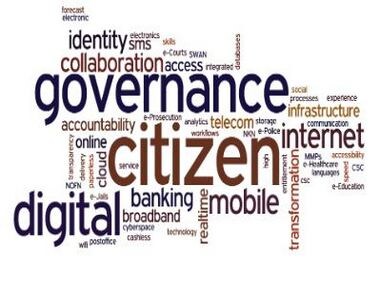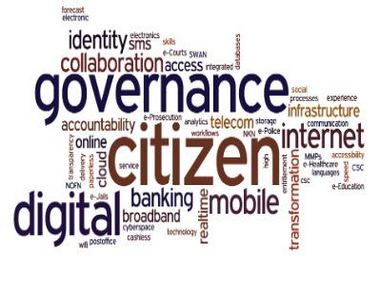EY and FICCI have put forward policy recommendations to the Government aimed at providing an impetus to the Indian telecoms sector, thus driving the coveted “Digital India” agenda. Commenting on the current scenario, Prashant Singhal, Global Telecommunications Leader, EY, said, “Digital Bharat is the only growth engine which will have the potential to transform India into a knowledge led economy and society. It is thus imperative for us to overcome the current challenges and bridge the digital divide which would also act as a catalyst to the economic growth. Moreover, information and communications technology (ICT) is at the bedrock of harnessing India’s young population and harvesting it to make India a lead economy. INR 1 lakh crore program will bring the power of ICT in the hands of the aam aadmi. It will enable India to gain leadership in adoption and manufacturing of IT products and services and empower citizens with digital inclusion and job opportunities. This is what we truly see as ‘Sabka saath, sabka vikas’. Moreover, telecom should be considered a critical infrastructure sector and its financing needs should be addressed accordingly.” [caption id=“attachment_2218708” align=“alignleft” width=“380”]
 Courtesy: DeitY[/caption] Virat Bhatia, Chairman Communications and Digital Economy Committee, FICCI said, “The digital revolution now stands at the cusp of a transformation, with the government having laid out its vision of a digitally enabled India over the last one year. The success of both “Digital India” and “Make in India”, will ride on the back of strong telecom ecosystem, digital infrastructure and industry’s link in the value chain. Some important issues on policy and regulatory front will need continued attention. The Report outlines a roadmap of the resurgence of the telecom sector accompanied specific and actionable recommendations.” Challenges in the sector Today we pride ourselves in having one of the world’s highest subscriber base of over 996 Mn users; however, the reality of our sector also stares at our face. There is a significant urban-rural divide, with urban teledensity at 150% as compared to 47% in rural areas. Rising debt: Sector debt increased from INR 2.5 TN in 2013 to INR 3.5 TN in 2015 post auctions – India’s debt to EBITDA ratio is much less than even smaller neighbouring countries such as Bangladesh High imports: Around 83% of India’s current demand for handsets is met via imports Right of Way: Different states have varying procedures and costs to obtain right of way approvals – while approximately 150,000 additional towers will be required to provide pervasive mobile connectivity Low Broadband penetration: India ranks 125th globally in terms of fixed broadband penetration Lowest tariffs in the world: Per minute call rate is less than a glass of water. Our telecom tariffs are one of the cheapest in the world and the subscribers here pay less than users in the United States and Australia. Indian subscribers pay lower rates for calls made to other networks compared to users in Sri Lanka, Pakistan, China, Australia and the US. High levies: Levies account for around 30% of revenue of telcos in India, as against 5% in other APAC countries – compare this with unutilized accumulated funds in USOF to the tune of INR356 billion Spectrum holding: Average operator spectrum holding in India is around 18MHz, which is amongst the lowest globally Opportunities The report also presents a detailed view on industry challenges and actionable policy recommendations to realize the dream of a “Digital India”. Rationalize taxes and levies; provide for financing needs: Bring handsets under provisions of “Goods of Special Importance” under the Central Excise Tax Act, 1956; thus, capping the maximum VAT levied by states at 5%. Shift National Calamity Contingent Duty of 1% from mobile phones to other goods, to share levies equitably among industries. Discourage retrospective amendments in laws, all changes should be forward-looking. Set up a Telecom Finance Corporation similar to the principles of Power Finance Corporation. Eliminate or reduce USOF fund to 1%–3%. Efficiently utilize the funds already collected under USOF. Provide adequate spectrum at reasonable prices: Develop a clear road-map of spectrum availability with a rational pricing structure. Make available all spectrum currently lying unutilized with various government agencies on priority in conformity with globally harmonized bands. Revise and reduce spectrum usage charge to 1%, given that spectrum is allocated at market-determined prices. Provide a fillip to manufacturing ecosystem: Minimum interest subsidy of 5% on all fixed capital investments for entire Electronic System Design and Manufacturing sector on the lines of benefits given under Technology Upgradation Fund Scheme. Ten-year tax holiday on a block of 15 years on all profits and gains for manufacturing in the mobile phone industry. Right of way (RoW) and other impediments to telecom tower installation: Incorporate the DoT guidelines in the statutory framework and rules in line with the 53rd parliamentary committee report. Adopt uniform RoW across all states at a uniform and reasonable cost Address security and governance issues of internet: There is a need for an overarching multi-stakeholder oversight body, which deals with all matters relating to cyber security and amalgamates the work done by different agencies. A principles-based approach to surveillance is required, so that trust among internet community is not lost. Establish policy framework to boost emerging services of cloud and M2M: Put in place clear regulatory frameworks to set up a solid foundation for services such as cloud and M2M to prosper. There should be a single nation-wide policy on data centers for providing cloud services, avoiding regional/state-wise difference in regulations.
Courtesy: DeitY[/caption] Virat Bhatia, Chairman Communications and Digital Economy Committee, FICCI said, “The digital revolution now stands at the cusp of a transformation, with the government having laid out its vision of a digitally enabled India over the last one year. The success of both “Digital India” and “Make in India”, will ride on the back of strong telecom ecosystem, digital infrastructure and industry’s link in the value chain. Some important issues on policy and regulatory front will need continued attention. The Report outlines a roadmap of the resurgence of the telecom sector accompanied specific and actionable recommendations.” Challenges in the sector Today we pride ourselves in having one of the world’s highest subscriber base of over 996 Mn users; however, the reality of our sector also stares at our face. There is a significant urban-rural divide, with urban teledensity at 150% as compared to 47% in rural areas. Rising debt: Sector debt increased from INR 2.5 TN in 2013 to INR 3.5 TN in 2015 post auctions – India’s debt to EBITDA ratio is much less than even smaller neighbouring countries such as Bangladesh High imports: Around 83% of India’s current demand for handsets is met via imports Right of Way: Different states have varying procedures and costs to obtain right of way approvals – while approximately 150,000 additional towers will be required to provide pervasive mobile connectivity Low Broadband penetration: India ranks 125th globally in terms of fixed broadband penetration Lowest tariffs in the world: Per minute call rate is less than a glass of water. Our telecom tariffs are one of the cheapest in the world and the subscribers here pay less than users in the United States and Australia. Indian subscribers pay lower rates for calls made to other networks compared to users in Sri Lanka, Pakistan, China, Australia and the US. High levies: Levies account for around 30% of revenue of telcos in India, as against 5% in other APAC countries – compare this with unutilized accumulated funds in USOF to the tune of INR356 billion Spectrum holding: Average operator spectrum holding in India is around 18MHz, which is amongst the lowest globally Opportunities The report also presents a detailed view on industry challenges and actionable policy recommendations to realize the dream of a “Digital India”. Rationalize taxes and levies; provide for financing needs: Bring handsets under provisions of “Goods of Special Importance” under the Central Excise Tax Act, 1956; thus, capping the maximum VAT levied by states at 5%. Shift National Calamity Contingent Duty of 1% from mobile phones to other goods, to share levies equitably among industries. Discourage retrospective amendments in laws, all changes should be forward-looking. Set up a Telecom Finance Corporation similar to the principles of Power Finance Corporation. Eliminate or reduce USOF fund to 1%–3%. Efficiently utilize the funds already collected under USOF. Provide adequate spectrum at reasonable prices: Develop a clear road-map of spectrum availability with a rational pricing structure. Make available all spectrum currently lying unutilized with various government agencies on priority in conformity with globally harmonized bands. Revise and reduce spectrum usage charge to 1%, given that spectrum is allocated at market-determined prices. Provide a fillip to manufacturing ecosystem: Minimum interest subsidy of 5% on all fixed capital investments for entire Electronic System Design and Manufacturing sector on the lines of benefits given under Technology Upgradation Fund Scheme. Ten-year tax holiday on a block of 15 years on all profits and gains for manufacturing in the mobile phone industry. Right of way (RoW) and other impediments to telecom tower installation: Incorporate the DoT guidelines in the statutory framework and rules in line with the 53rd parliamentary committee report. Adopt uniform RoW across all states at a uniform and reasonable cost Address security and governance issues of internet: There is a need for an overarching multi-stakeholder oversight body, which deals with all matters relating to cyber security and amalgamates the work done by different agencies. A principles-based approach to surveillance is required, so that trust among internet community is not lost. Establish policy framework to boost emerging services of cloud and M2M: Put in place clear regulatory frameworks to set up a solid foundation for services such as cloud and M2M to prosper. There should be a single nation-wide policy on data centers for providing cloud services, avoiding regional/state-wise difference in regulations.
Digital India drive: EY, FICCI share policy recommendations for telecoms sector
FP Staff
• June 16, 2015, 11:59:10 IST
EY and FICCI have put forward policy recommendations to the Government aimed at providing an impetus to the Indian telecoms sector, thus driving the coveted “Digital India” agenda.
Advertisement
)
End of Article